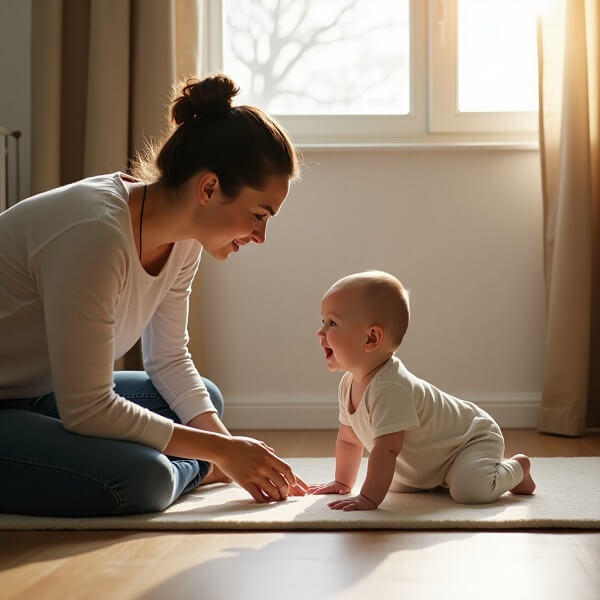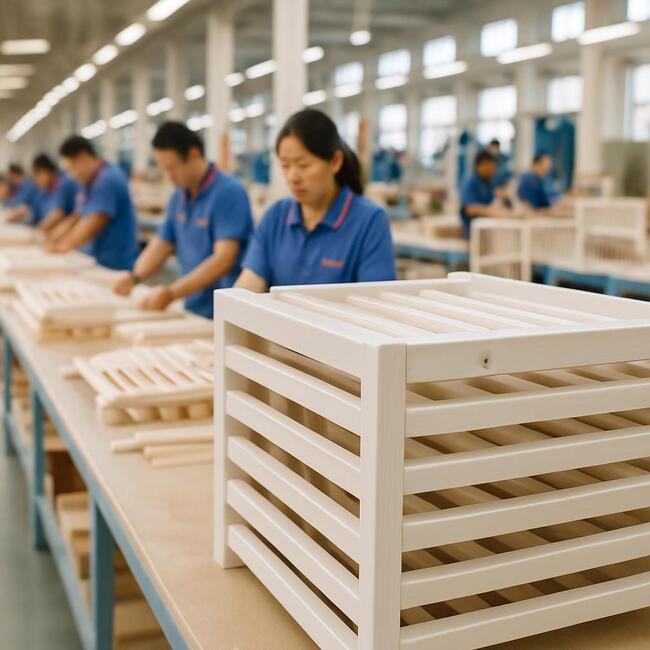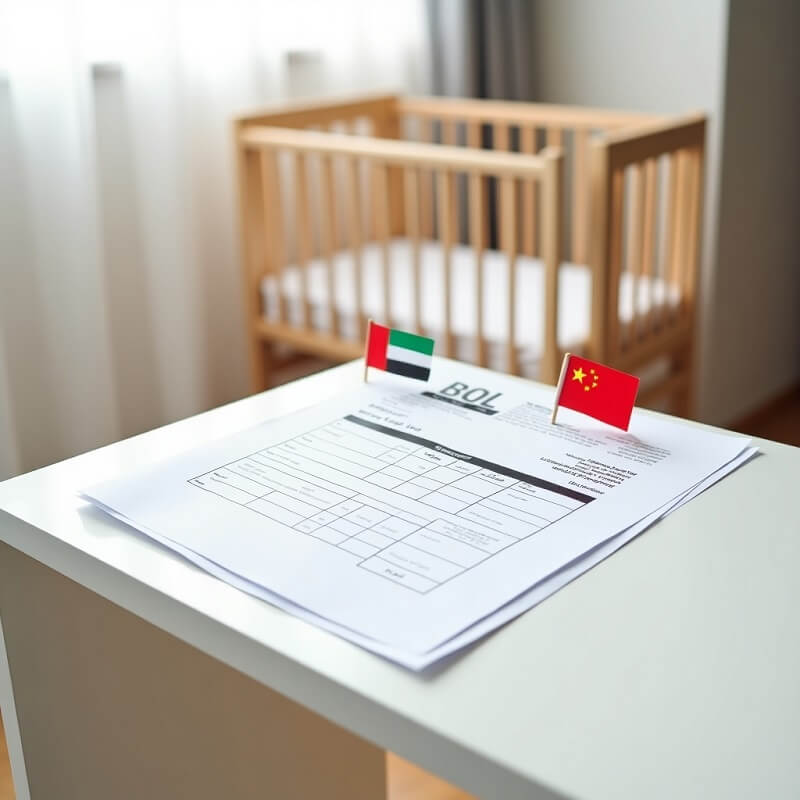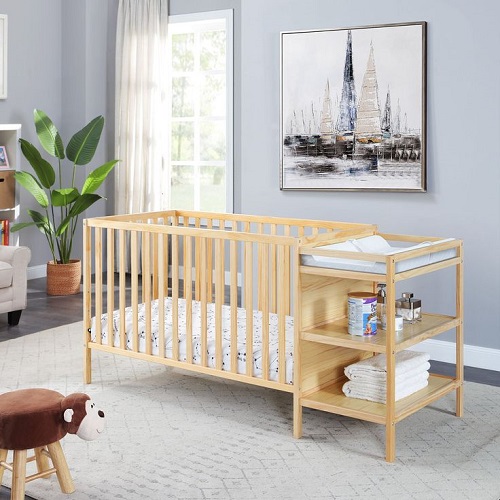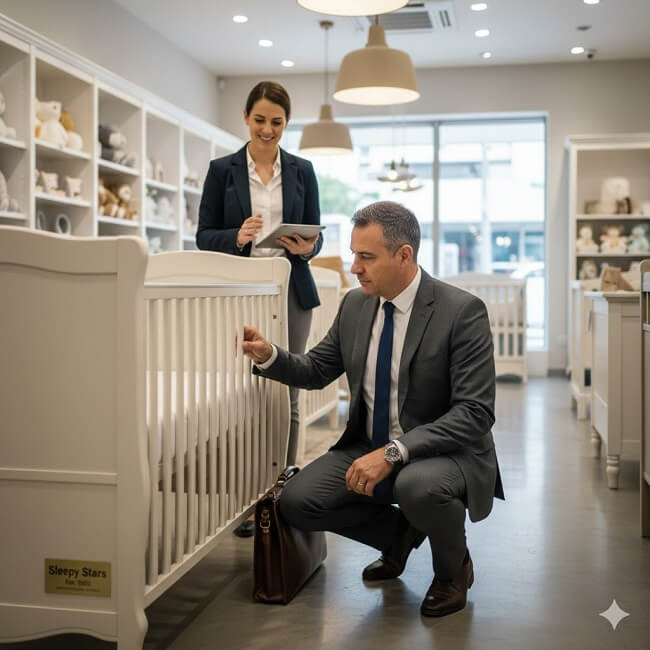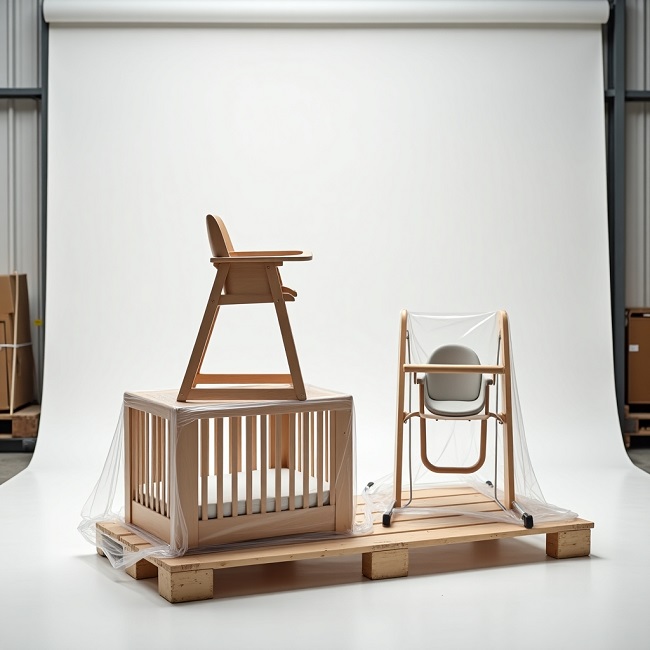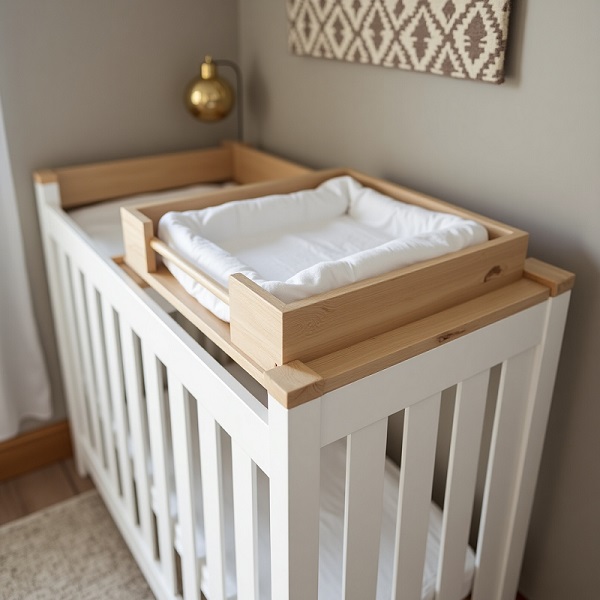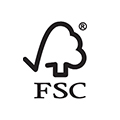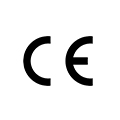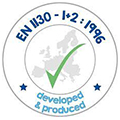Welcoming a new baby is an exciting time. As parents, you look forward to every big milestone—especially those first steps. The joy of seeing your child become mobile is huge. But this stage also comes with big questions. Many new parents feel anxious about the best way to help their baby walk.
We understand that many tools can offer convenience, but a child’s movement is too important to leave to chance. Our article offers a balanced and professional view, focusing not on what to avoid but on expert-approved, development-friendly paths to walking.
To help you create a safe, engaging world for your little explorer, we have broken down 6 alternatives that experts approve of.
Why Look for Alternatives?
Many new parents are looking for tools that can help their baby move and play safely. They want to give their child the best chance to grow strong and independent. While some traditional baby walkers offer convenience, many parents choose to look for alternatives.
This is often because of two common concerns. First, some parents worry about safety, especially the risk of faster movement near stairs or edges. Second, there are developmental questions. Some experts suggest that too much time in a seated walker might change how a baby’s leg muscles are used. It might encourage standing on tiptoes instead of a natural heel-to-toe stride.
The real benefit of alternatives is that they support natural, free movement. They empower the baby to use their own core and leg muscles to move from one position to the next—sitting, crawling, pulling up, and cruising. This process is how a baby learns balance, builds essential strength, and gains confidence.
These alternative solutions put the baby in control of their own growth. This approach is backed by the idea of being an expert enabler, offering your child the safest and most effective path to their first independent steps.
The 6 Expert-Approved Alternatives for Early Development
1. Barefoot Floor Time
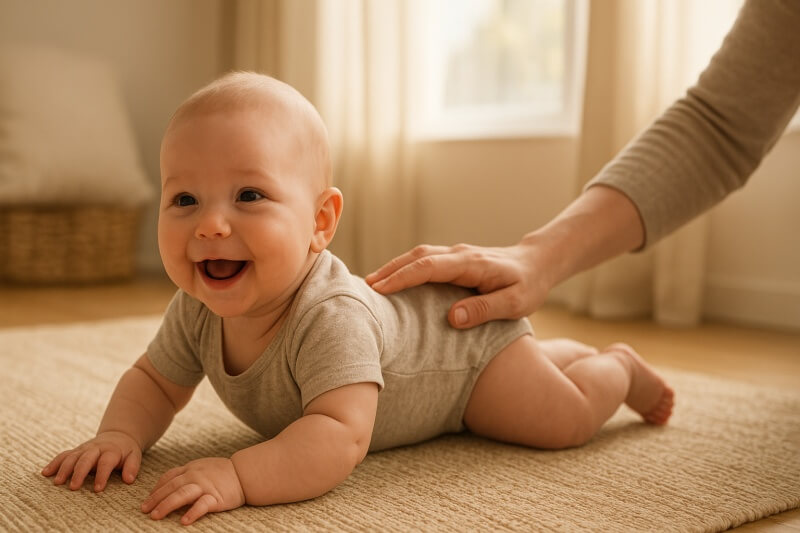
The simplest and most important activity for early development is floor time—and specifically, barefoot floor time. When your baby’s feet are on the floor without socks or shoes, they get crucial sensory feedback. They feel the texture, the temperature, and the grip of the ground.
This sensory work builds the foundation for sitting, crawling, and eventually walking. It encourages them to naturally spread their toes and use their entire foot for movement.
Best Application Stage: 0 to 12+ Months (From tummy time onward)
Expert Tip: Make sure the surface is safe and clean. Use a large, non-slip play mat. Give your baby plenty of time each day for free, unsupervised movement (once safety checked). Let them kick, roll, and pivot without any restrictive clothing.
2. Play Mats or Baby Play Gym
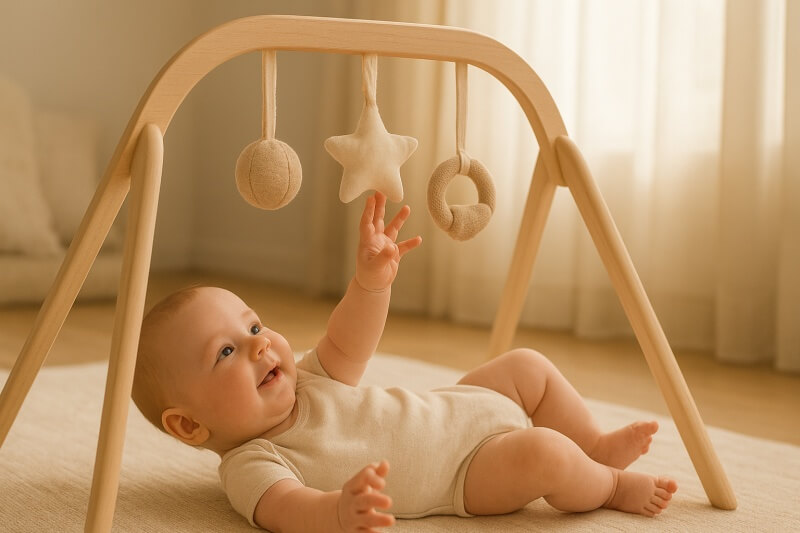
Play mats and baby gyms are essential tools for early sensory development. They are not just toys; they are your baby’s first classroom. The hanging toys encourage them to reach, bat, and track objects with their eyes. This reaching and grabbing is key to developing hand-eye coordination. It also builds the shoulder and core strength needed for later crawling and sitting. This simple equipment helps babies explore their world in a controlled, stimulating environment.
Best Application Stage: 0 to 6 Months (Focus on lying down and batting toys)
Expert Tip: Change the toys often to keep your baby interested. Place the mat in a high-traffic family area so the baby feels included and stimulated by different sounds and sights. Do not use the gym as a replacement for interaction; talk to your baby and engage with them during their play time.
3. Baby Jumpers/Activity Centers
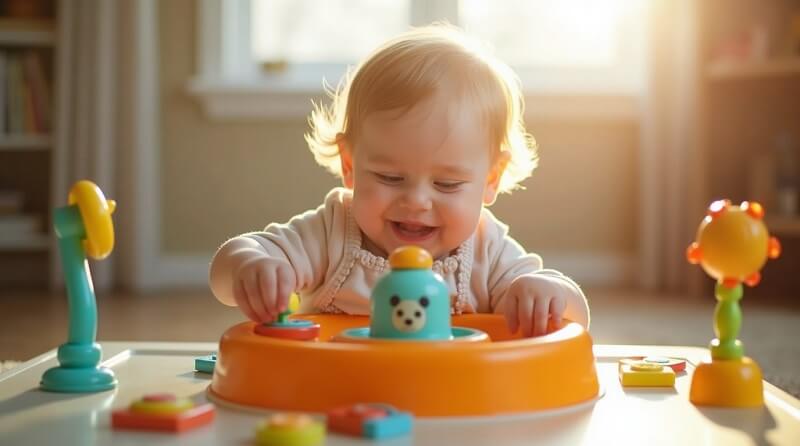
Once your baby has good head control and can sit up well, jumpers or stationary activity centers can be a great choice. Unlike traditional, wheeled walkers, these devices keep the baby in one safe, fixed spot. They allow babies to use their leg muscles to push down and bounce.
This movement helps build strength in the legs and core. These are tools for fun, supervised exercise, and they provide a contained, stimulating environment when parents need a moment of hands-free time.
Best Application Stage: 6 to 12 Months (When baby has strong head and neck control)
Expert Tip: Limit the time your baby spends in the jumper to 15-20 minutes at a time. Too much time can put stress on developing joints. Make sure your baby’s feet are flat on the floor or the base, not dangling, to prevent toe-walking habits.
4. Ride-on Toys
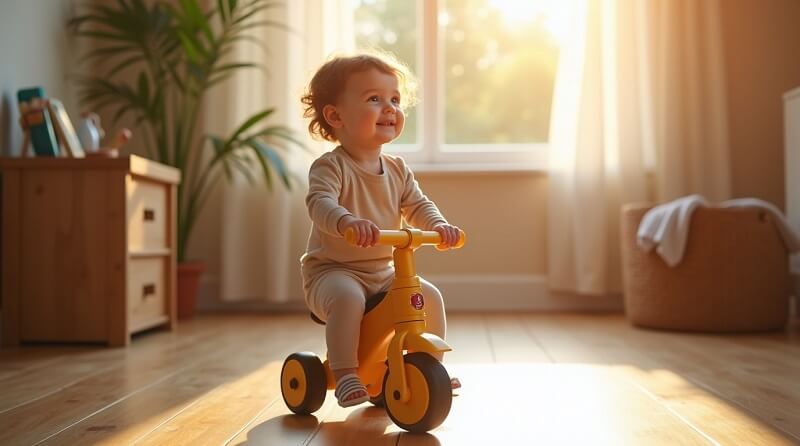
Ride-on toys are a fun and effective way to prepare older babies and toddlers for confident walking. These toys, such as small balance bikes or foot-powered cars, teach two main, advanced skills.
First, they learn balance as they shift their weight while gliding and pushing forward. Second, and crucially, they learn direction. The child must actively plan their path and steer. By sitting low to the ground and pushing with their entire foot, they strengthen their lower body powerfully. It gives them a growing sense of control and independence over their movement.
Best Application Stage: 12 to 24+ Months (When baby can cruise reliably or walk independently)
Expert Tip: Choose toys that are very low to the ground and do not have pedals. Start the activity in a large, open area indoors or on flat ground outdoors. Encourage your child to push off and glide, which helps them develop a better sense of coordination and momentum for independent steps.
5. The Power of the Playpen
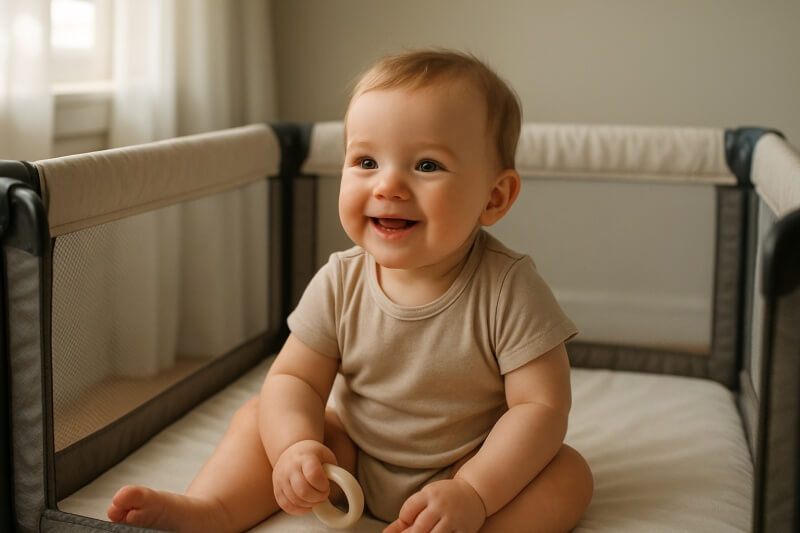
A high-quality playpen or pack-and-play is perhaps the best tool for combining safety and free movement. It creates a defined, “yes” space where everything is safe and your baby can move without constant supervision. This controlled freedom is a game-changer for parents.
It allows the child to practice crucial skills like pulling up to stand, cruising along the edges, and building confidence in a standing position, all while parents can quickly step away for a moment. But not all playpens are created equal.
Best Application Stage: 6 to 24 Months (From sitting to independent walking)
Expert Tip: Use the playpen for purposeful play, not just storage. Put only 2-3 engaging toys inside at a time to encourage deep, focused play. Ensure the floor mat inside is firm enough to support standing practice.
6. Push Walkers or Push Toys
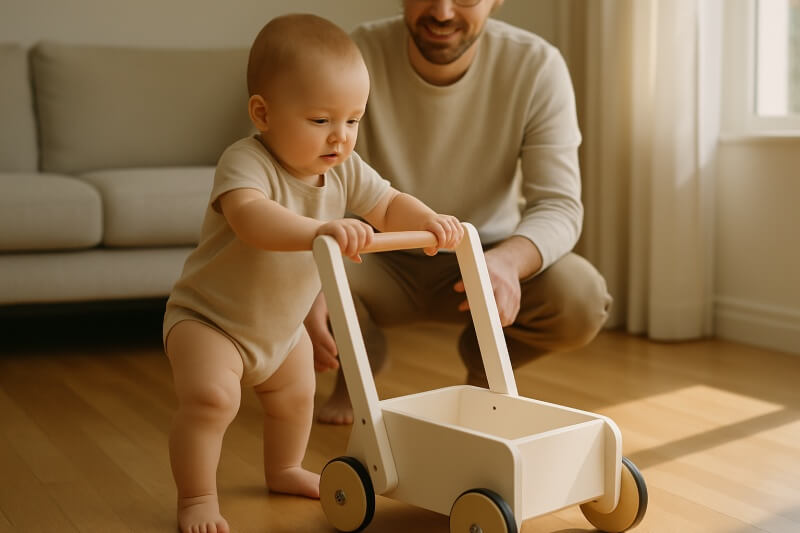
Push walkers are often considered the best “walker” alternative because they are used by babies who are already standing. The baby must physically hold onto the bar and stand independently to move the toy forward. This forces them to use their own legs for propulsion and balance.
The weight of the push toy provides a stable point of support. This safety makes it an excellent choice for a baby just mastering the standing and cruising stages. It’s an active process that strengthens leg muscles and improves coordination, laying the groundwork for walking.
Best Application Stage: 9 to 18 Months (When baby can pull up and stand steadily)
Expert Tip: Always choose a push walker with a wide base and good stability to prevent tipping. For babies who are new to it, add weight to the front of the walker (like heavy books) to keep it from moving too fast. Stay close and supervise closely as your baby learns to control its speed and direction.
Actionable Tips for Parents
Finding the right alternative is only one part of the journey. The other part is how you support your child every day. Remember these practical tips to empower your baby during the exciting stage of learning to walk.
Focus on the Process, Not the Milestones
Every child develops at their own pace. Try not to compare your baby’s first steps to other children’s milestones. The quality of your child’s movement—their strength, coordination, and confidence—is much more important than the speed at which they start walking. Cheer for every small success, like a successful pull-up or a steady cruise.
Creating a Safe Environment
All the alternatives we discussed rely on a safe space. Take the time to baby-proof your home thoroughly. This means securing furniture, covering outlets, and making sure the floor is clear of small items. A safe environment encourages your baby to explore without fear, which is key to learning.
When to Seek Professional Help?
While the range for walking is wide (typically 10 to 18 months), knowing when to talk to a doctor is important. If your baby is 18 months or older and not walking independently, or if you notice a consistent limp, waddle, or toe-walking, consult your child’s pediatrician. This check-in simply gives you peace of mind and ensures they are on the right path.
Conclusion
The road to walking is a joyful adventure best supported by controlled freedom and safe exploration. Remember to focus on your child’s confidence, not just their speed. Be the expert enabler they need. Creating the right environment is vital. Invest in environments and tools that match your commitment to their safe development.
Recommended Related Articles:
- 5 Best Baby Push Walkers
- How to Use a Baby Walker Safely?
- Baby Walkers Vs. Activity Centers: How to Choose?
- Top 10 Baby Walker Manufacturers/Suppliers
- 20 Best Baby Walkers of 2025
- When Can Baby Use a Walker?
- 10 Top-Rated Baby Walker Exporters
- Are Push Walkers Good for Babies?
- What to Look for in a Baby Walker?

